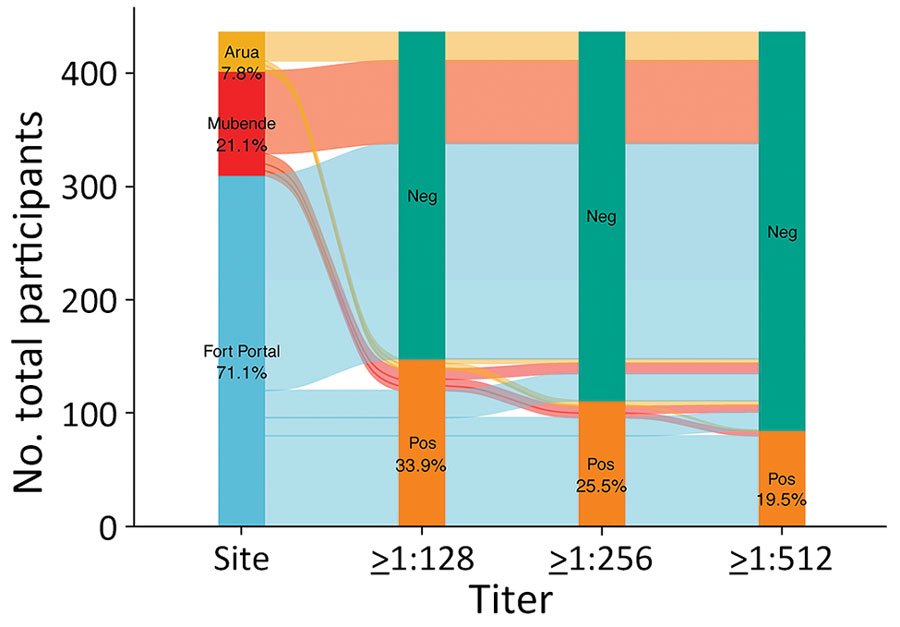Volume 30, Number 7—July 2024
Dispatch
Evidence of Orientia spp. Endemicity among Severe Infectious Disease Cohorts, Uganda
Figure 1

Figure 1. Alluvial diagram of serology from acute serum samples used in a study of Orientia genus endemicity among severe infectious disease cohorts, Uganda. The diagram represents Orientia spp.–positive immunofluorescent assay IgG at >128, >256, and >512 from 3 sites in Uganda. Colored lines indicate total participants from each site with positive or negative serology at 3 different titer cutoffs. Neg, negative; pos, positive.
1Members of the Acute Febrile Illness and Sepsis in Uganda study teams are listed at the end of this article.
Page created: May 10, 2024
Page updated: June 22, 2024
Page reviewed: June 22, 2024
The conclusions, findings, and opinions expressed by authors contributing to this journal do not necessarily reflect the official position of the U.S. Department of Health and Human Services, the Public Health Service, the Centers for Disease Control and Prevention, or the authors' affiliated institutions. Use of trade names is for identification only and does not imply endorsement by any of the groups named above.